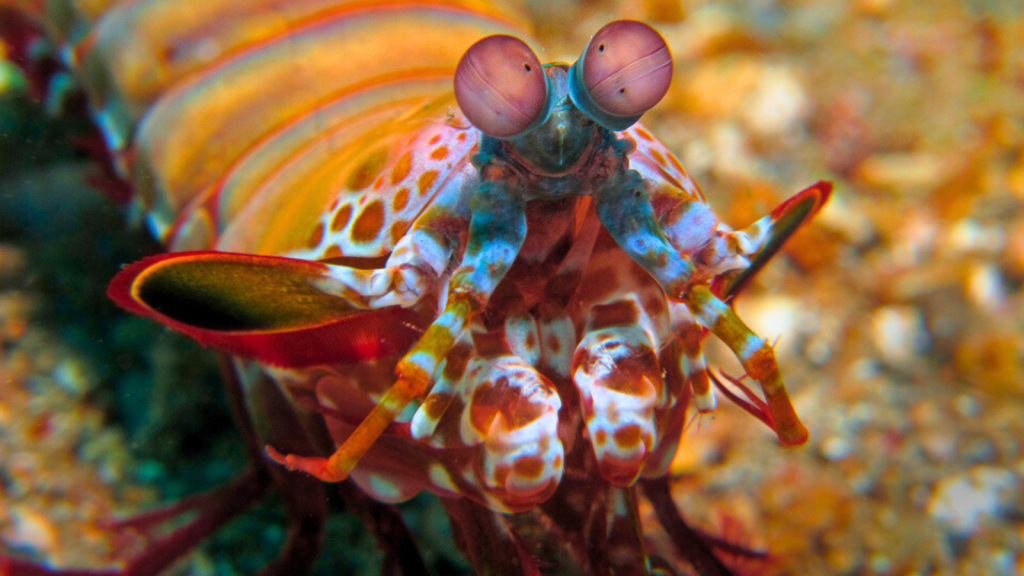The mantis shrimp is a marvel of the ocean, hiding incredible abilities beneath its colourful exterior. These fierce predators pack a punch that’s strong enough to break aquarium glass, and their eyes are unlike anything else in the animal kingdom. Despite their name, they’re neither shrimp nor mantids, but belong to a group called stomatopods. Found in tropical and subtropical waters around the world, these fascinating creatures have been baffling scientists and delighting nature lovers for years. Here are 15 surprising facts about the remarkable mantis shrimp.
They Have the World’s Most Complex Eyes
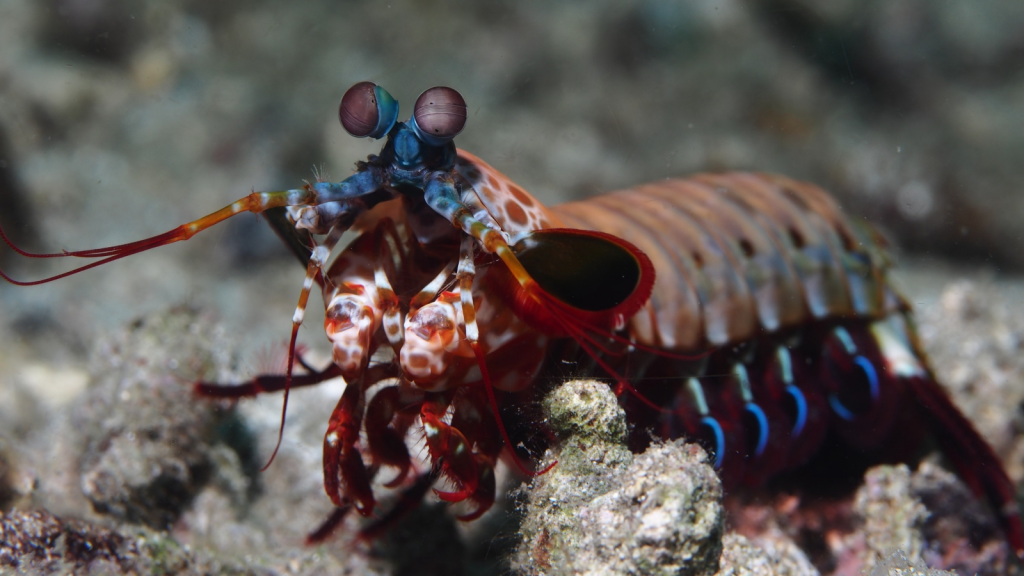
Mantis shrimp possess eyes with 16 colour receptors, compared to our mere three. This allows them to see a spectrum of colours we can’t even imagine, including ultraviolet light. Their eyes can also detect different types of polarised light, giving them an unparalleled view of their underwater world. Each eye can move independently and has three separate regions, allowing the mantis shrimp to judge distance and depth with a single eye.
Their Punch Is Faster Than a .22 Calibre Bullet
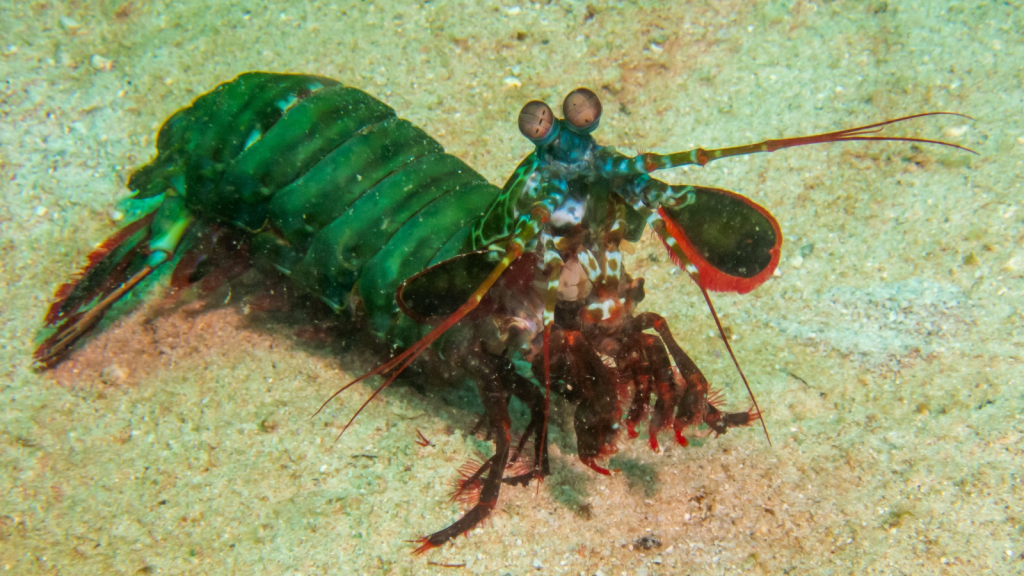
When hunting, mantis shrimp strike with their raptorial appendages at speeds up to 23 metres per second. This is so fast it creates cavitation bubbles in the water, which collapse with a flash of light and extreme heat. The force of their strike is enough to break shells and even crack aquarium glass. This powerful punch has earned them the nickname ‘thumb splitters’ among divers who’ve had unfortunate encounters.
They’re Not Actually Shrimp
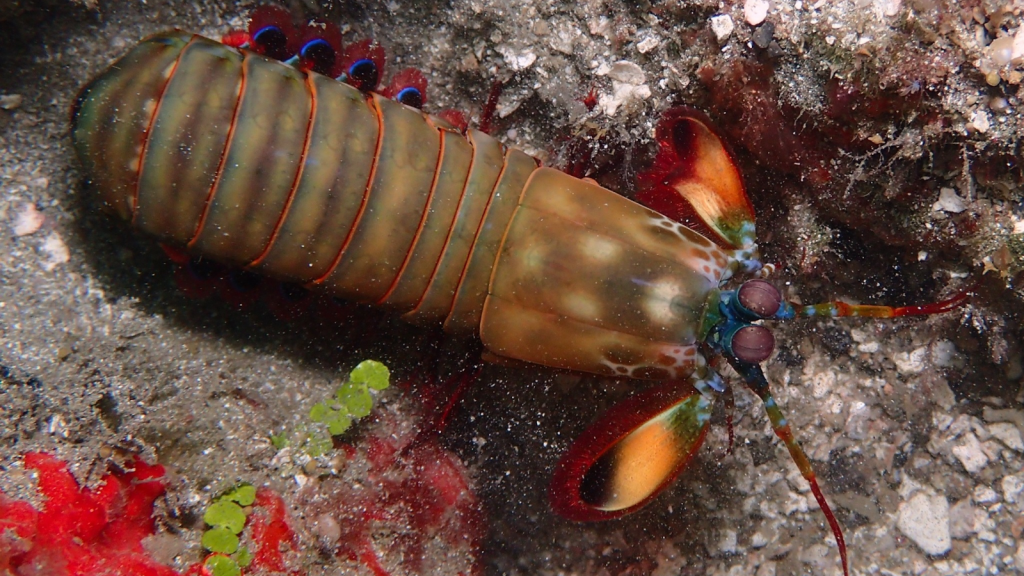
Despite their common name, mantis shrimp aren’t shrimp at all. They belong to a group of crustaceans called stomatopods, which are more closely related to crabs and lobsters. Their misleading name comes from their predatory appendages, which resemble those of a praying mantis. There are over 450 known species of mantis shrimp, ranging in size from less than 2 cm to over 30 cm long.
Some Species Can Live for 20 Years
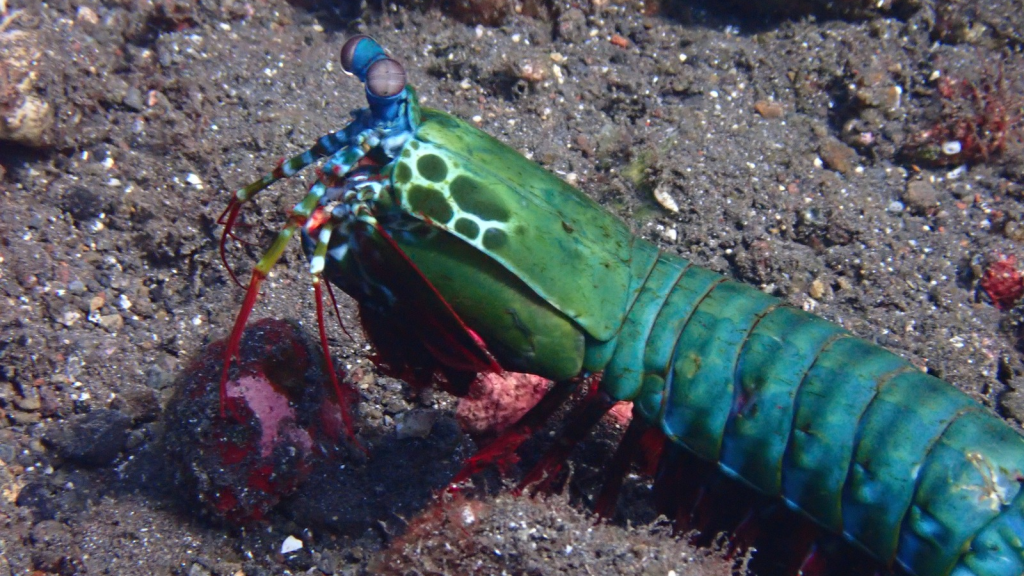
While many small sea creatures have short lifespans, some species of mantis shrimp can live for up to two decades. This long life allows them to grow to impressive sizes, with some reaching lengths of over 30 centimetres. Their longevity also means they can have complex social behaviours and learn from experience. The peacock mantis shrimp, one of the most colourful species, is known to live up to 6 years in captivity.
They’re Monogamous
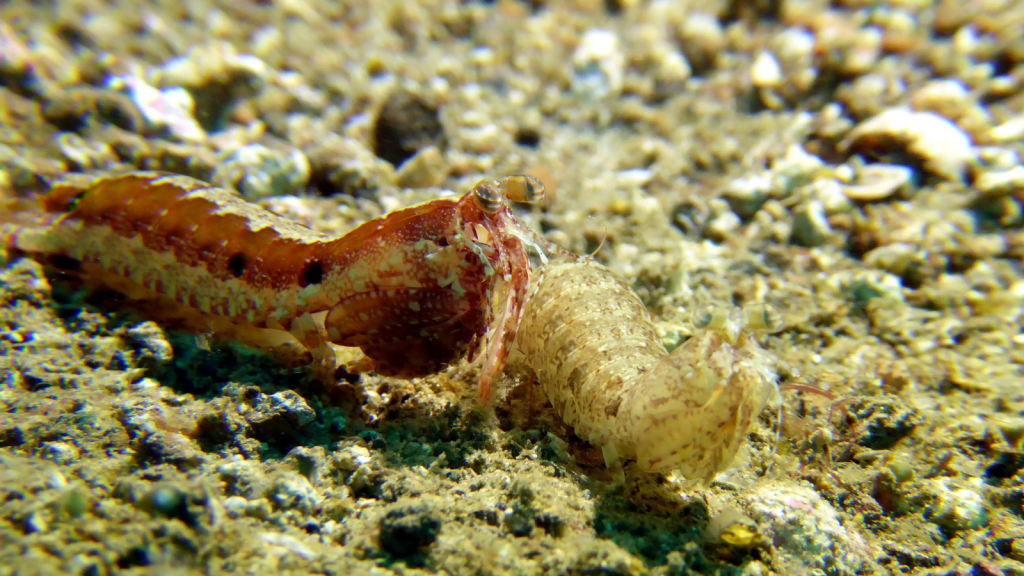
Unlike many marine animals, mantis shrimp often form long-term monogamous pairs. These couples share a burrow and defend their territory together. Some pairs have been observed staying together for up to 20 years, working as a team to hunt and protect their young. This loyalty extends to helping injured partners, with healthy mantis shrimp observed assisting their injured mates.
Their Shells Are Inspiring New Body Armour
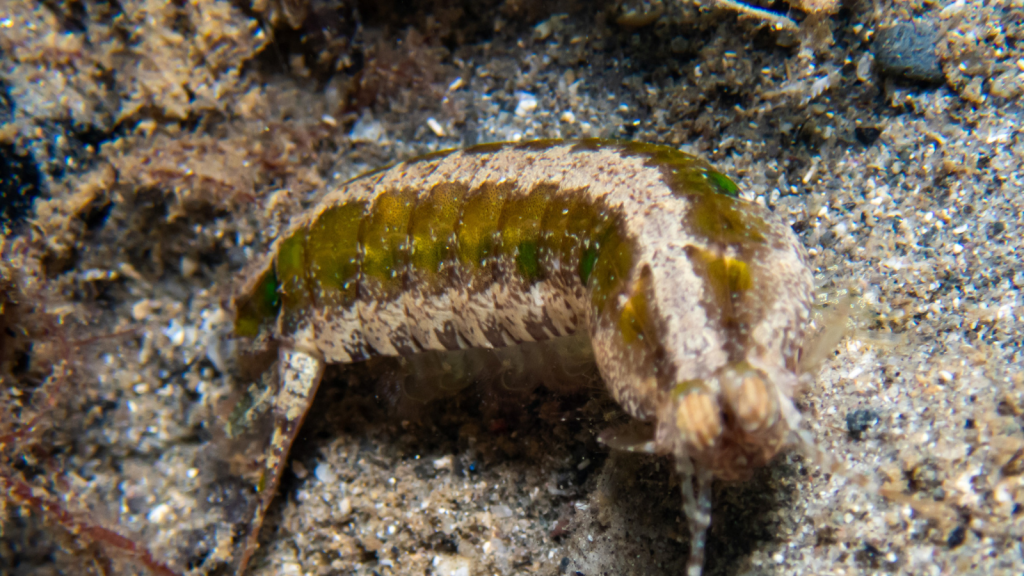
The mantis shrimp’s club-like appendages are incredibly strong and resistant to damage, despite the forces they endure. Scientists are studying the structure of these clubs to develop new types of body armour and sports equipment. The secret lies in the club’s unique spiral structure, which prevents cracks from spreading. This bio-inspired design could lead to lighter, stronger protective gear for soldiers and athletes.
They Can Regrow Lost Limbs
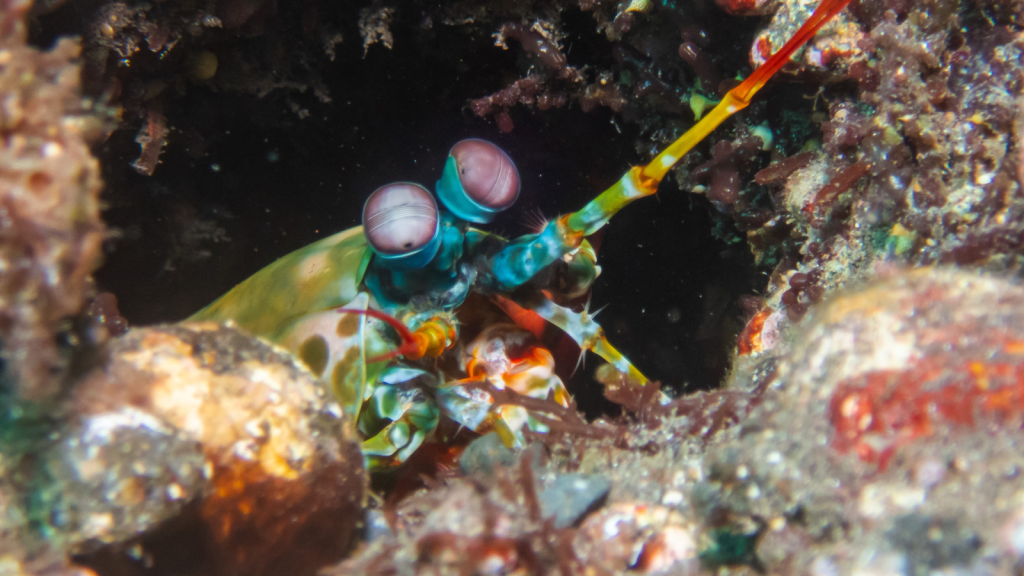
Like many crustaceans, mantis shrimp have the ability to regenerate lost limbs. If they lose an appendage in a fight or to a predator, they can regrow it over the course of several moults. This remarkable ability helps them survive in their competitive marine environments. The regrown limb is often smaller at first but will gradually return to full size with subsequent moults.
Some Species Are Venomous
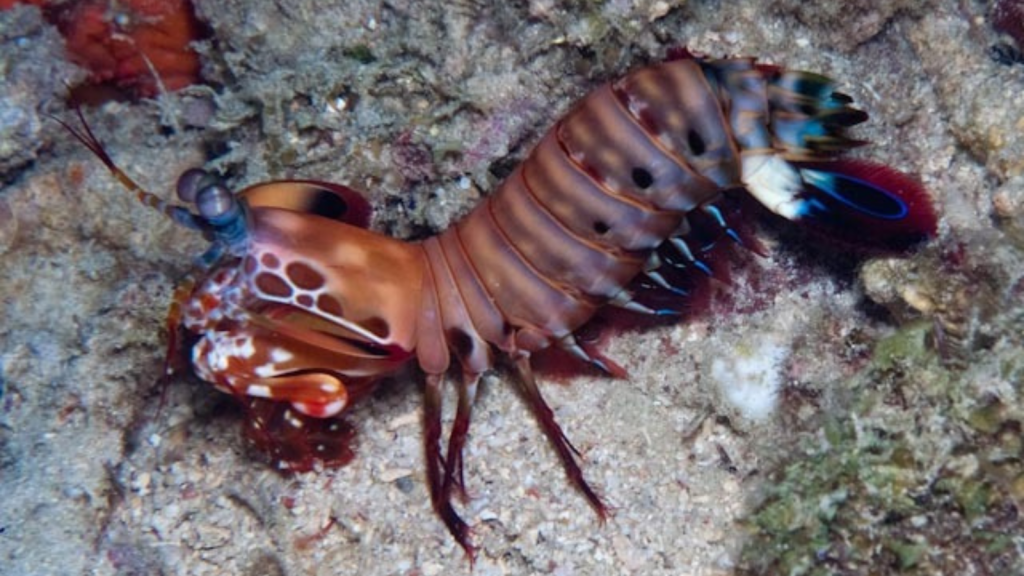
While all mantis shrimp pack a powerful punch, some species have an extra weapon: venom. These venomous mantis shrimp inject toxins into their prey through spines on their raptorial appendages. The venom helps to quickly subdue their victims, making hunting more efficient. The toxins in mantis shrimp venom are currently being studied for potential medical applications.
They Use Fluorescence to Communicate
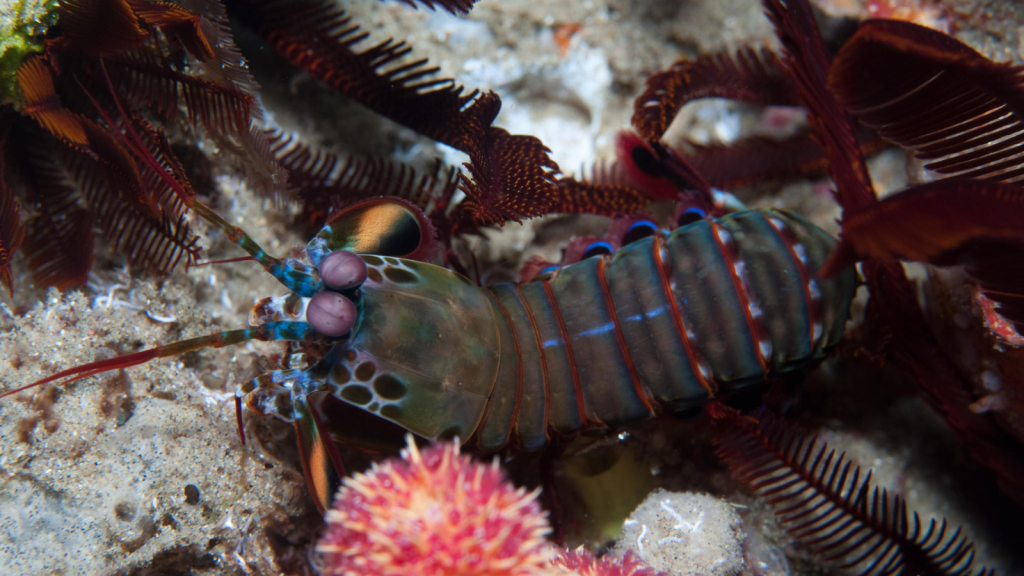
Many mantis shrimp species have fluorescent patches on their bodies that are invisible to the human eye. These patches glow under certain wavelengths of light, allowing the shrimp to communicate with each other in ways we’re only beginning to understand. This secret language may help them recognise mates and competitors. The fluorescent patterns are unique to each species, potentially helping mantis shrimp identify their own kind in the diverse reef environment.
Their Larvae Are Giants
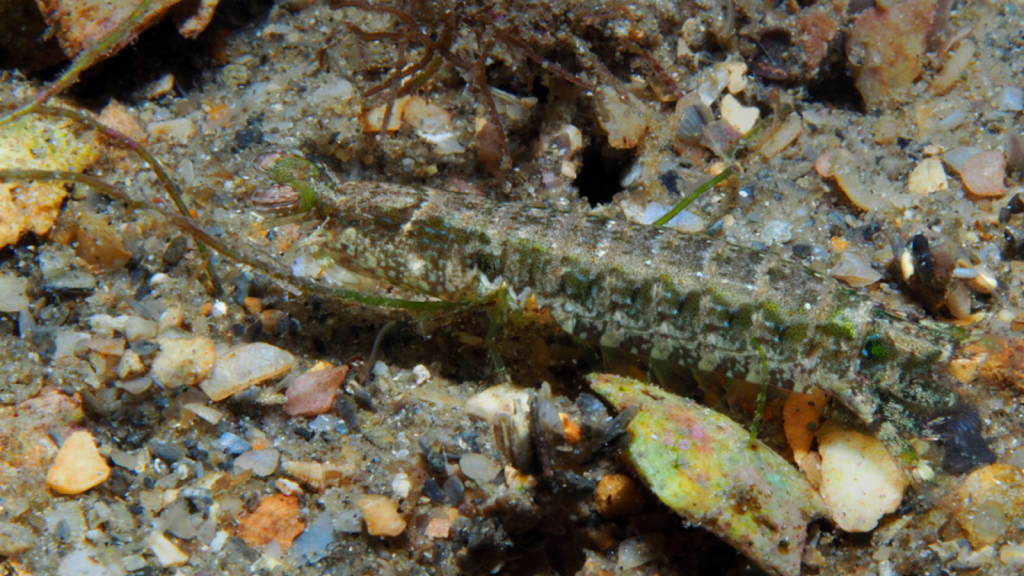
Compared to other crustaceans, mantis shrimp larvae are enormous. Some species have larvae that are up to 50 mm long, which is larger than many adult shrimp. These supersized babies are well-equipped to survive in the open ocean, where they spend the first few months of their lives. The large size of mantis shrimp larvae allows them to be strong swimmers and active predators from the moment they hatch.
They’re Excellent Parents
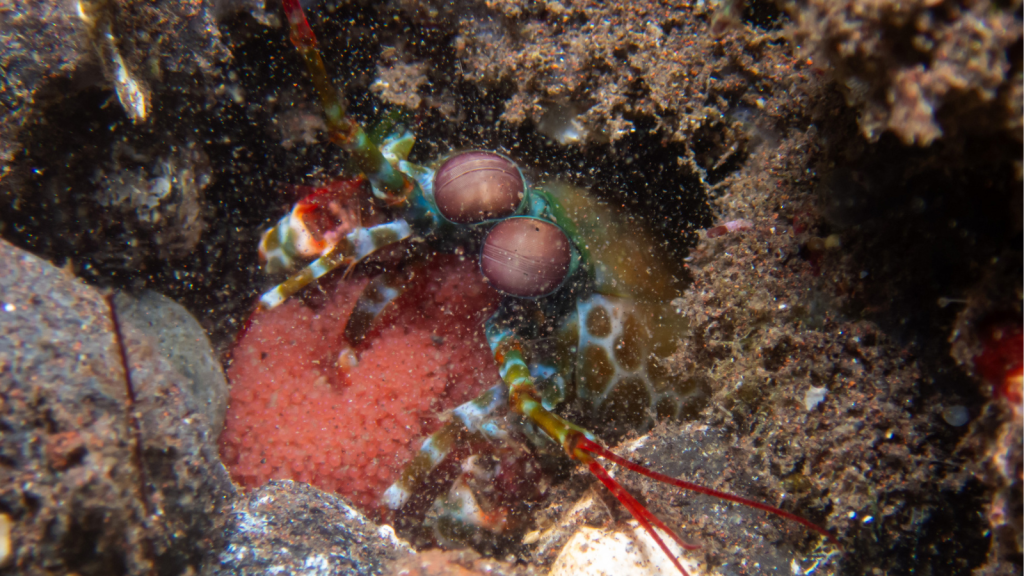
Many mantis shrimp species show remarkable parental care. Females carry their eggs with them, constantly cleaning and aerating them until they hatch. Some species even continue to care for their young after hatching, protecting them in their burrows until they’re ready to venture out on their own. Male mantis shrimp also participate in parental care, often guarding the burrow entrance while the female tends to the eggs.
They Can Recognise Individual Faces
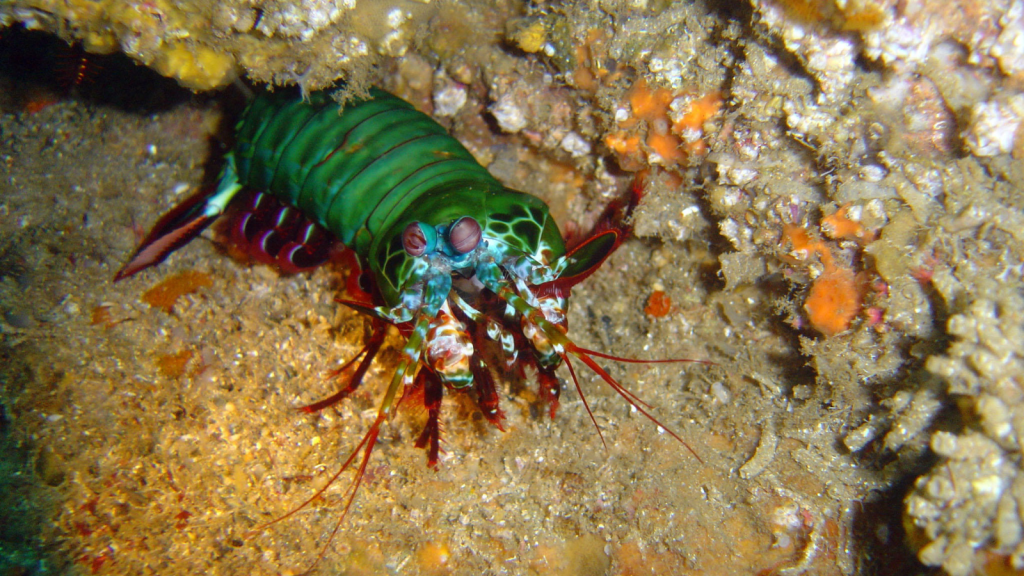
Despite their small size, mantis shrimp have shown the ability to recognise and remember individual faces. This skill is crucial for maintaining their complex social structures, allowing them to distinguish between mates, rivals, and neighbours in their reef communities. This facial recognition ability is particularly impressive given that mantis shrimp brains are relatively small compared to their body size.
Their Shells Are Made of Unique Materials
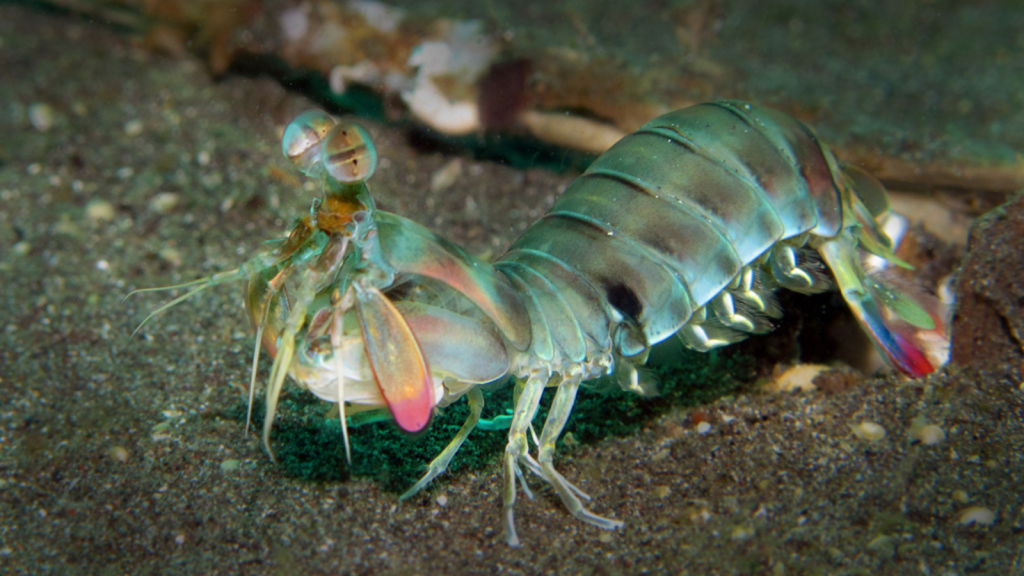
The mantis shrimp’s shell is made of a material called chitin, but it’s arranged in a unique way that makes it incredibly strong and lightweight. This structure allows the shrimp to withstand the forces of its own punches and protects it from predators. Engineers are studying this design to create stronger, lighter materials for use in everything from aircraft to bicycle helmets. The shell’s structure is particularly effective at dissipating energy from impacts, making it an ideal model for protective gear.
They Have Blue Blood
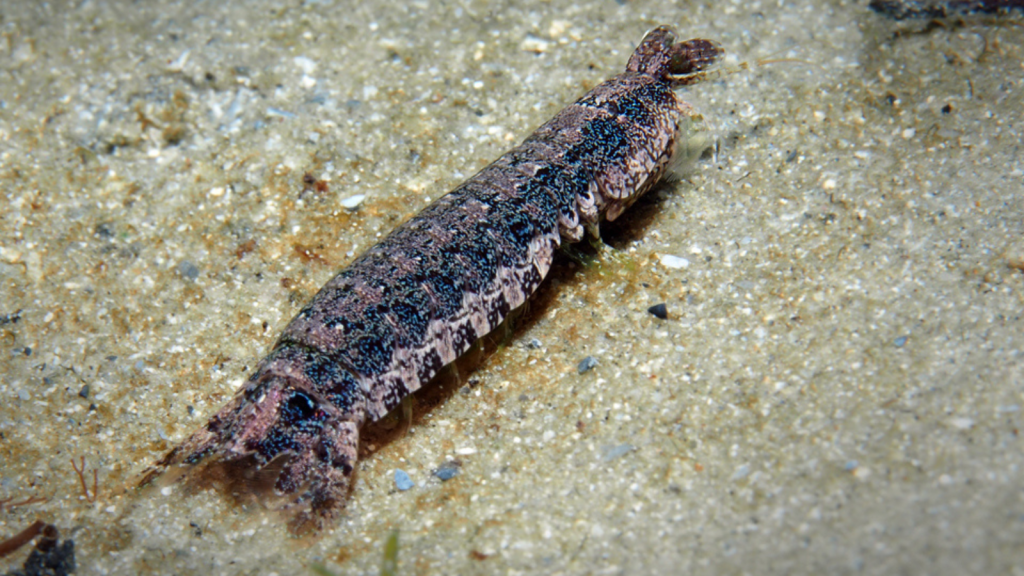
Like horseshoe crabs, mantis shrimp have blue blood due to the presence of copper-based hemocyanin, rather than the iron-based hemoglobin found in humans. This blue blood is more efficient at transporting oxygen in cold, low-oxygen environments, helping mantis shrimp thrive in their marine habitats. The hemocyanin in mantis shrimp blood also plays a role in their immune system, helping to fight off infections.
Some Species Farm Algae

Certain mantis shrimp species have been observed cultivating algae gardens in their burrows. They tend to these gardens carefully, removing unwanted species and encouraging the growth of their preferred algae. This farming behaviour provides them with a reliable food source and shows their surprising intelligence. Some species even ‘transplant’ their favourite algae to new areas of their burrow, demonstrating a sophisticated understanding of their environment.
Becky is a fervent wildlife enthusiast and pet care expert with a diploma in canine nutrition. Her love for animals stretches beyond the domestic, embracing the wild tapestry of global fauna. With over a decade of experience in animal welfare, Becky lends her expertise to OutlandishOwl through insightful articles, captivating wildlife information, and invaluable guidance on pet nutrition. Her work embodies a deep commitment to understanding the intricate lives of animals and a passion for educating others on sustaining natural habitats. Becky's hands-on conservation efforts and her knack for translating complex dietary science into practical pet feeding tips make her an indispensable voice for creatures great and small.

